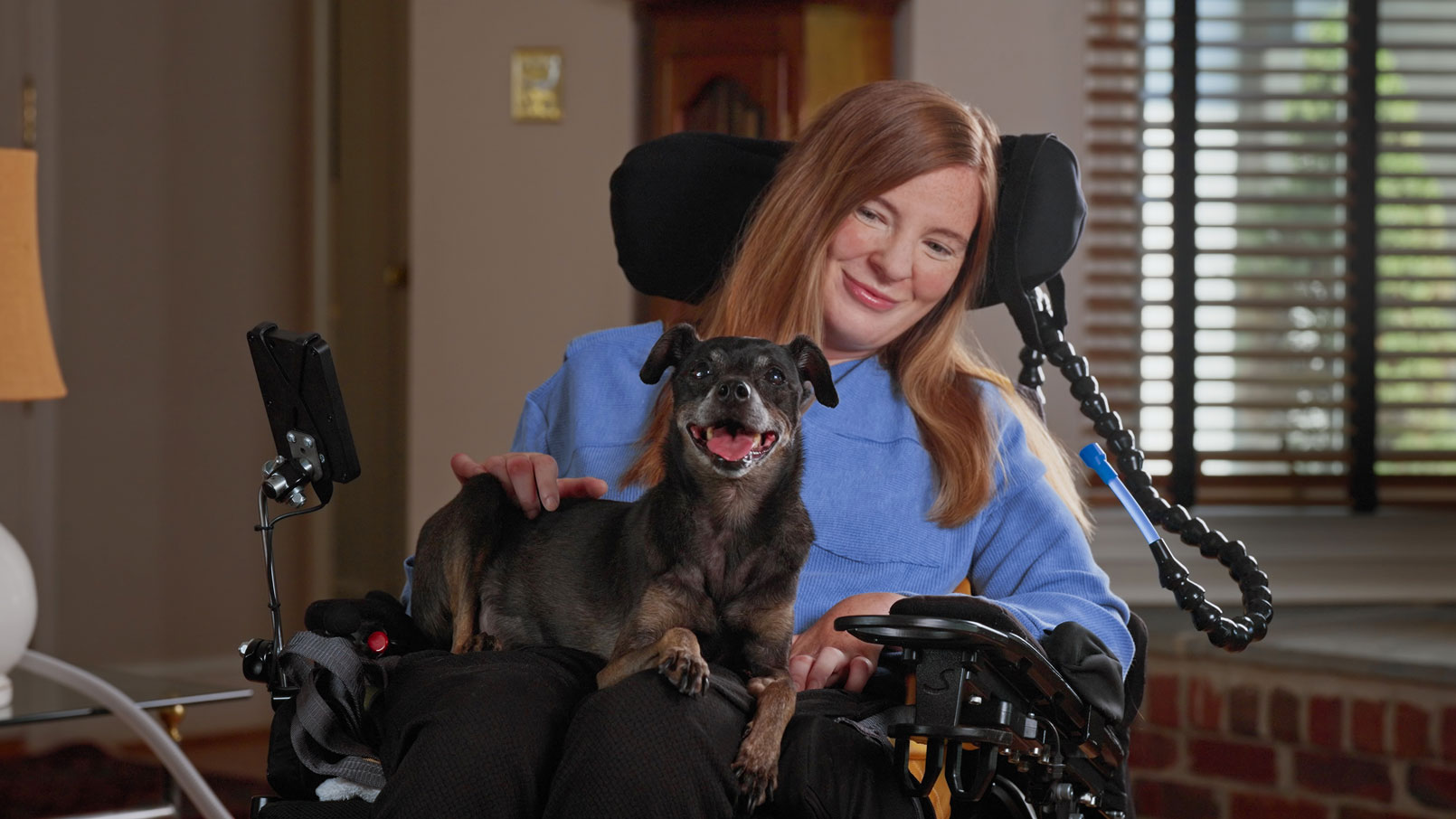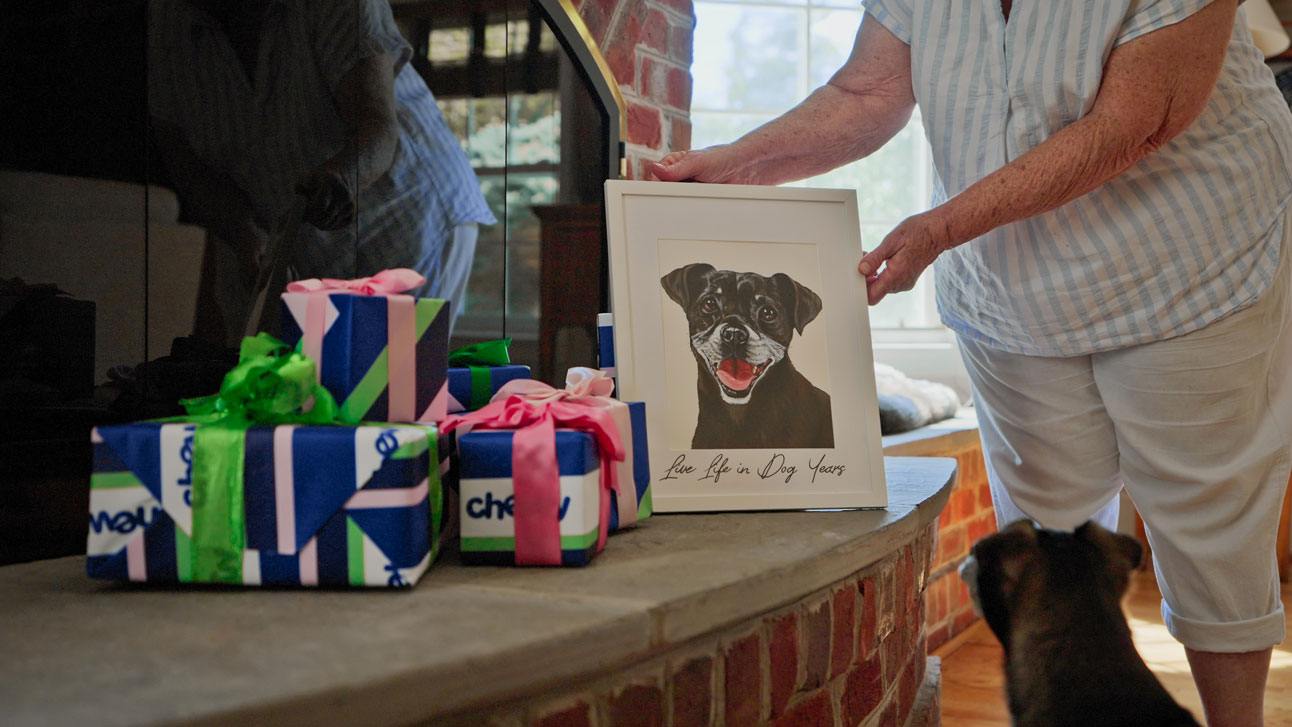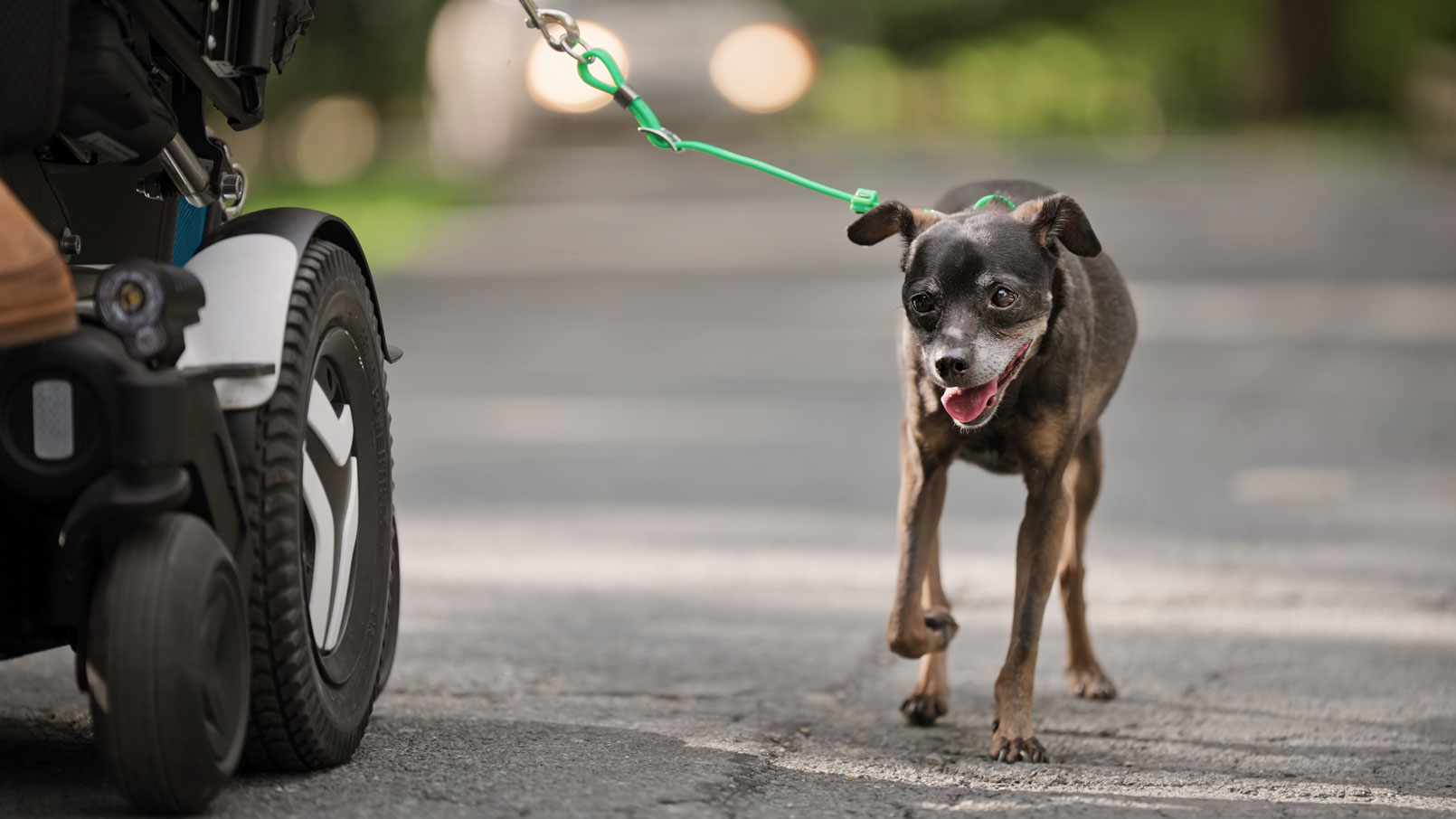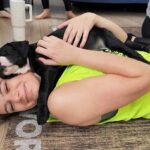How Chewy Claus Helped Brooke and Dray Reclaim Their Favorite Tradition
You might know Brooke Eby from social media, where she shares her journey with ALS through humor and honesty. But behind every post is Dray—the senior Chihuahua mix who inspired her motto: “Live life in dog years.”
“When I was diagnosed, the prognosis was to live 2–5 years from your first symptoms,” Brooke recalls. “I was like, well, I’m 33 now. If I only have a couple years, I need to make every year worth seven. And I looked at Dray, and I realized he’s living every year like it’s seven. So I just figured we’d kind of age together.”
That perspective has guided Brooke ever since—and it all started with the little dog who changed how she sees life.
Brooke and Dray have been unable to take walks together since Brooke began using a power wheelchair. So when Dray “wrote” his letter to Chewy Claus, he asked for something simple but powerful:
“What I really want is for Chewy Claus to take her ALS away, but I know that’s not possible,” his letter reads. “I just want to go on a walk with my mom again.”
Chewy Claus made that wish come true with a custom solution designed just for Brooke and Dray—and a donation to make that solution available to wheelchair users everywhere.
Key Takeaways
- Chewy Claus helped ALS advocate Brooke Eby and her dog Dray reclaim their favorite activity: walking together.
- With the help of Bold Lead Designs, Brooke received a custom adaptive leash that works with her power wheelchair.
- Dray quickly adjusted to the new leash, allowing the pair to resume their walks and independence.
- The prototype leash could inspire future innovations to help more pet parents with disabilities.
Closer with Every Step

Photo by Chewy
When Brooke adopted Dray 10 years ago, she was living on her own in San Francisco. She reached out to a rescue organization and met her new furry bestie: a Chihuahua mix puppy.
“He jumped up on me right away. He seemed like so much fun!” Brooke recalls. “I threw him in the car, raced to get supplies, and was just winging it, basically.”
Brooke was new to caring for a dog on her own, and today she laughs as she recalls the ups and downs of those early years. “I had a feeling I had ruined two lives,” she jokes, remembering cleaning up after Dray’s carsickness and her struggles to keep his barking under control.
But through it all, one activity helped them learn to live together. “Our favorite thing was walking all over the city,” Brooke says. “Dray loved the city. He loved wandering around the parks and meeting other dogs on walks.”
Before long, Brooke and Dray had settled into their new normal. “Together, we figured it out,” Brooke says. “Just two young kids in the city.”
When Everything Changed
Those long walks continued for years—until Brooke was diagnosed with amyotrophic lateral sclerosis, or ALS, in 2022. Also known as Lou Gehrig’s Disease, ALS is a progressive disease that affects the brain and spinal cord. Over time, Brooke lost the ability to walk.
“Walking Dray became a game of adaptations,” she says. “I’d try to use my walker, and Dray would knock it over. I’d try to use a cane, and he thought it was a stick and would chase it.”
Once, while using a wheelchair to take Dray for a walk, Brooke bent over with a dog poop bag to pick up after him—and got stuck folded forward.
“I had to ask a passerby—who was a very handsome guy!—to help,” Brooke laughs. “After that I was like, ‘Dray, we’re staying in.’”
Today, 36-year-old Brooke lives in Potomac, Maryland, with Dray, cat Bradley, and her parents, Ginny and Cliff. When she began using a power wheelchair, walks became dangerous for Dray. Brooke had no options but to use a standard leash, with the constant danger of getting tangled in the wheels of her motorized chair. Brooke thought her days of walking Dray were over.
“I don’t know what he thinks about what’s going on with me,” Brooke says. “He’s just seeing me be less and less active. I wonder if he thinks I don’t want to spend time with him outside like we used to.”
Living Life in Dog Years

Photo by Chewy
Brooke’s love for Dray has always been strong. But after her ALS diagnosis, Brooke realized that Dray is more than a pet—he’s an inspiration.
When she was first diagnosed, Brooke says, “I felt like my life was cut short. The goals I had now had a stop date to them.”
That’s when she looked at Dray and realized that they both had about the same amount of time left—and that the only way to move forward was to make the most of every moment.
Together, she says, they’d “live life in dog years.”
Part of making the most of each moment is sharing the highs and lows on Instagram and TikTok, where Brooke’s mix of honesty and dry humor have inspired millions. She’s made headlines from “Rolling Stone” to “People“ and beyond, raised funds for ALS organizations like Team Gleason, and partnered with an adaptive clothing company to make fashion accessible to people with ALS and other disabilities.
“It’s about removing the taboo,” she says. “My goal is to make people feel comfortable about it.”
Designing the Leash
For years, Dray has helped Brooke power through hard times and live life to the fullest. So when it was time to send Dray’s letter to Chewy Claus, Brooke knew exactly how to return the favor:
“[I wanted] to find a way to walk, to feel like it’s the olden days when we were both young and running around the city.”
It sounds simpler than it is. Brooke’s wheelchair is a complex piece of machinery weighing hundreds of pounds. She relies on it for mobility, so any adaptation would need to be expertly designed.
To ensure Dray’s new leash worked for both Brooke and Dray, Chewy Claus worked with Bold Lead Designs, a small business that offers custom-designed products for service dogs and other furry companions for folks with disabilities.
“It sounds like a simple request, but it’s not,” explains Katrina Boldry, Bold Lead owner and designer. In order to keep Dray a safe distance from Brooke’s wheelchair, a custom part would need to be attached—one that’s sturdy enough to ensure that safe distance, but flexible enough to allow Dray comfortable freedom of movement.
The solution: a spring-loaded leash extension that kept Dray safely distanced while allowing him flexibility to roam.
This leash was custom-designed for Brooke and Dray, taking into account Dray’s size and Brooke’s wheelchair specs. The one Brooke uses won’t work for every power wheelchair user, Boldry says—but it’s a prototype that could be adapted for other pet parents.
“Now that we know it works, we’re going to look into how to make it for other people,” Boldry says.
“There’s such a market for it. So many pet owners have disabilities, and it’s tough,” Brooke says. “There’s not really a ton of adaptations being made in the pet world right now. I hope it opens up a lot of independence for people and more activity for their pets.”
To extend the holiday magic to wheelchair users worldwide, Chewy donated $10,000 to Team Gleason to help improve accessibility for pet parents living with ALS. The organization will use these funds to further initiatives that empower individuals to stay active and connected with their pets.
Dray’s First Big Test

Photo by Chewy
The creation of the adaptive leash represented a major challenge handled. Now it was time for the final step: seeing how Dray would respond to it.
“Often, we’re working with a trained service dog,” Boldry says. “Here, we were working with a pet—and a lot of pets become afraid” when trying something new.
There was just one way to know how Dray would react: To take the new leash out for a spin.
This part was crucial. Creating a negative experience with the leash now could take lots of training to overcome—and for Brooke and Dray, time is precious.
Boldry and Brooke’s parents held their breath as Brooke slowly led Dray down the driveway. Dray was hesitant at first—this new leash was unlike anything he’d used in his life.
Cautiously, with gentle encouragement from Brooke, Dray took his first few steps alongside her wheelchair. Then he took a few more … and even more.
Before long, Dray and Brooke were rolling down the street, greeting neighbors and stopping to play with other dogs.
“It gave me goosebumps,” Boldry says. “It’s amazing to see that it’s working exactly the way we designed.
“You saw the smile on [Brooke’s] face,” she adds. “It was awesome.”
A Walk to Remember

Photo by Chewy
Thanks to their new adaptive leash from Chewy Claus, Brooke and Dray can return to their favorite pastime—and the feeling of freedom it brings.
“I feel a lot more independent,” Brooke says. “Having something like this is one less time I have to ask someone to do something for me.”
And even now, three years after Brooke’s ALS diagnosis, Dray is still inspiring her.
“I’m shocked at how quickly he adapted,” Brooke says. “He just accepted it and started walking. It’s a good lesson for all of us.”
Attributions
This holiday season, you can help bring more wishes like Brooke and Dray’s to life. Every letter to Chewy Claus helps feed shelter pets—and keeps the magic of the season alive for pets everywhere. Send your pet’s letter now.




